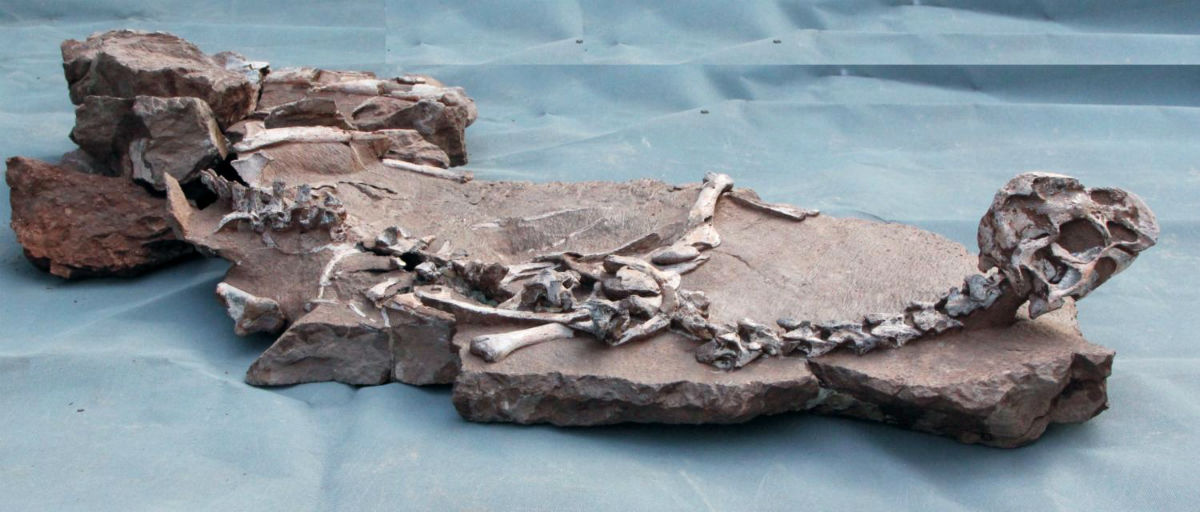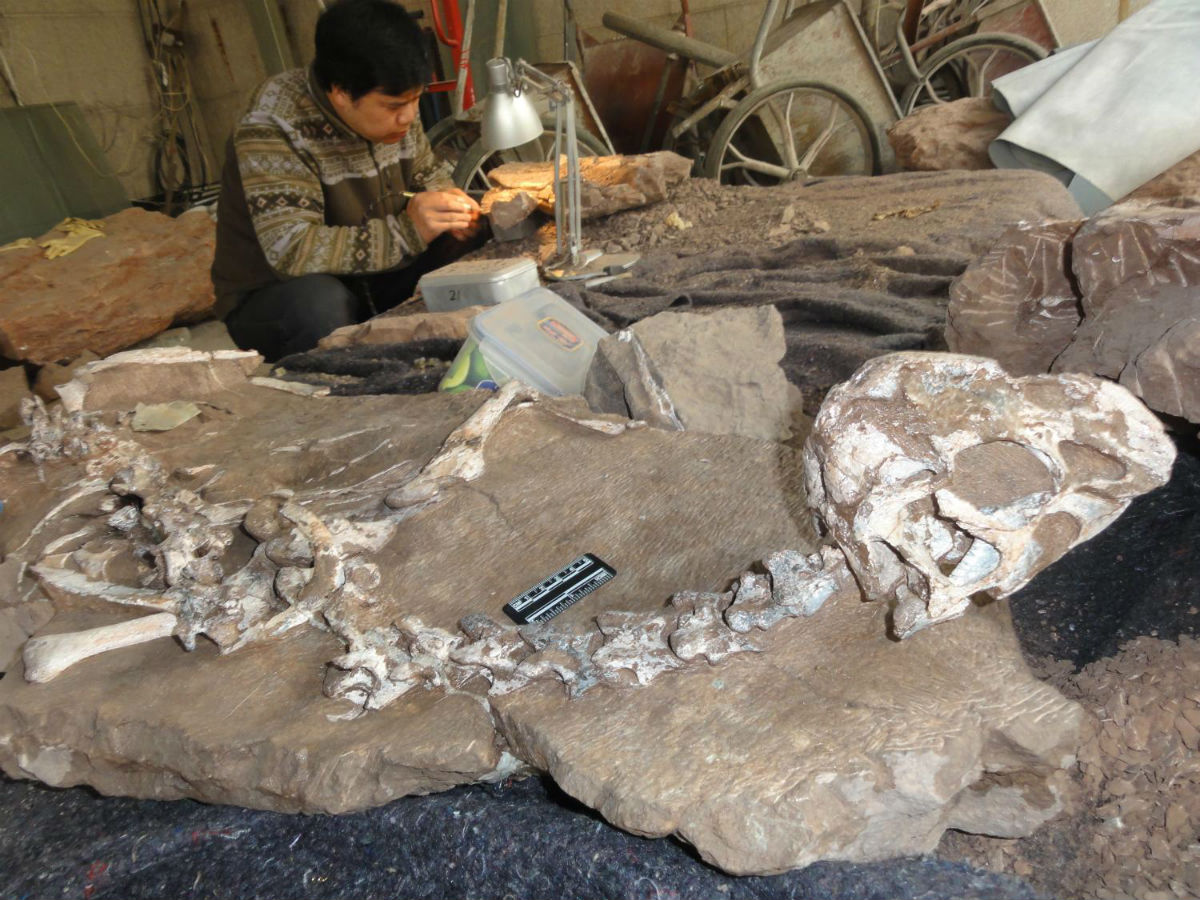Recently, Chinese construction workers suddenly made a revolutionary discovery in the world of paleontology: they are found in the South, a new species of feathered dinosaurs.
the Animal lived on the planet about 66 to 72 million years ago, just before the fall of a giant meteorite on Earth, after which, according to one theory, large dinosaurs died out. Note that scientists have long been debating what killed the terrible lizards: perhaps the role was played by volcanoes and even dark matter.
But back to the new opening. The Chinese colleagues joined the researchers from the UK. In the end, all together they are called the new Tongtianlong limosus, or “mud dragon on the way to heaven” – such a poetic way describes the last moments of the life of the animal before death. The body of a dinosaur, probably mired in the mud, tell paleontologists. However, his neck stretched forward, that is the animal, apparently, was trying to break free from a natural trap.

“the Remains of a new dinosaur – one of the most beautiful and yet saddest of the fossils that I have seen, says world-renowned paleontologist Steve Brusatte (Steve Brusatte), University of Edinburgh. But we were lucky that the dragon got stuck in the mud because his skeleton is one of the best copies among the dinosaurs that lived during the last several million years before the meteorite impact, changed the world in an instant”.
T. limosus belongs to the order of the two-legged feathered dinosaurs, called oviraptorosauria. Such ancient creatures had a small head, they have no teeth, but was quite a sharp “beak”. Over the past decade has discovered several similar species in North America and Asia, their sizes ranged from five feet to just over six meters.
“Mud dragon” became already the sixth representative of oviraptorosaur discovered in Ganzhou, in southern China. The creature was the size of a large sheep or small donkey, the researchers note.
One of the distinguishing features of the “dirty dragon” became a bone comb, which had previously been found in some representatives of this infraorder. Probably, this decorative element was intended to attract females and intimidate rivals.
“These crests like horns that are present in today’s mammals. Often, different mammals have different types of horns, and this helps to determine the difference between the types. Same thing with oviraptorosauria. T. limosus possessed a dome-shaped tuft are simple, convex, a few smacks on the helmet,” says Brusatte in an interview with National Geographic.
the Existence of such a large variety in the types of oviraptorosaurs living in one region of the current China, offering scientists a new look at the sunset era of the dinosaurs.
“They diversifitsiruetsya, become more diverse, within a few million years before the meteorite fell to the Ground. That is, the dinosaurs felt pretty good before this time there were new types, and they still dominated ecosystems,” notes Brust.
At the time designated in the South of China was “very dynamic and active environment,” he adds. There were a lot of thick and dense forests with lots of rivers and lakes, where in addition to oviraptorosaurs lived species of tyrannosaurs, for example, of the genus Qianzhousaurus – large plant-eating sauropods and duck-billed hadrosaurs.
the Researchers suggest that the appearance of many types of oviraptorosaurs in the same region was due to evolutionary radiation when organisms quickly evolyutsioniruet, developing traits that allow them to better adapt and thrive in different ecological niches.
for Example, oviraptorosaur is the theropods, which evolved from carnivorous dinosaurs like tyrannosaurs and velociraptors. But winged creatures after a time, lost all your teeth, replacing them with beaks. Accordingly, changed the type of foods they could eat.
“Today’s birds may use their beaks for various ways of production of their food. So it is possible that oviraptorosaur was omnivorous: and different species eat different types of food,” says Brusatte. Some had thick beaks and powerful jaw muscles. This suggests that they probably were able to open the shells and eat the clams. Others might be herbivorous creatures.
According to Brusatte, while the researchers can’t exactly answer the question, what kind of food used T. limosus. This will help to understand further study.

description of a new species was published in the scientific journal Scientific Reports.
we will Add that earlier “News.Science” told of the discovery of a new species of dinosaur with absurdly short legs. In addition, paleontologists recently found out what protoceratops had bony “frill”.
No comments:
Post a Comment